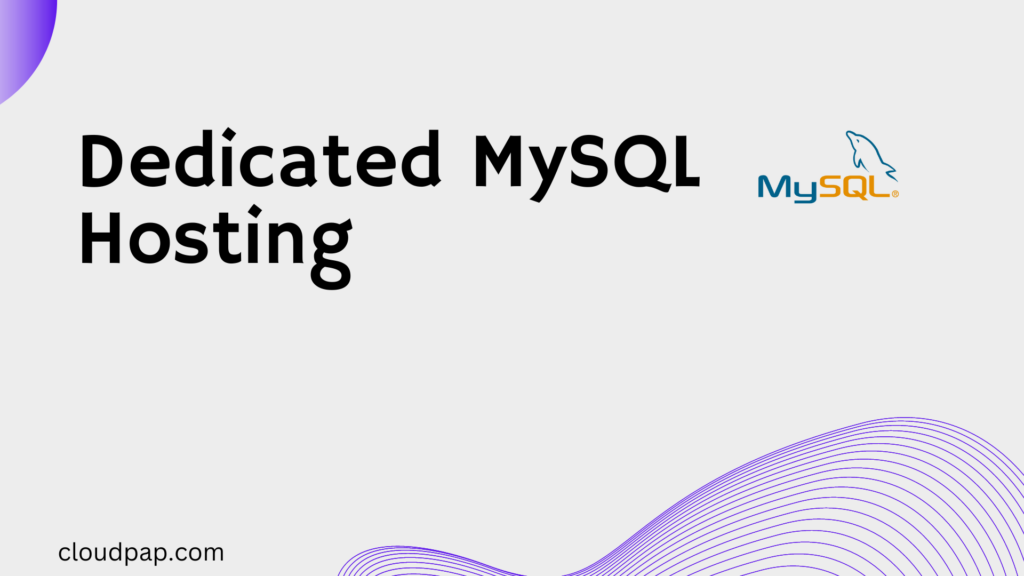Are you interested in starting your own cloud business but don’t know where to begin?
Starting a cloud business can be intimidating, but with the right tools and mindset, it can also be incredibly rewarding.
In today’s digital age, more businesses are turning to cloud solutions for their storage and computing needs. This creates a huge opportunity for entrepreneurs looking to enter the market.
The process of starting a cloud business may seem daunting at first, but with careful planning and execution, you can turn your idea into a successful venture.
In this article, we’ll provide some tips and tricks on how to start a cloud business from scratch.
Step 1. Researching the Cloud Market:
A. Assessing market demand and trends:
To begin your cloud business journey, it’s crucial to assess the current market demand for cloud services.
Stay informed about the latest trends and developments in cloud computing, such as emerging technologies and shifting customer needs.
Conduct thorough market research to identify the potential demand for your offerings.
Ways to assess market demand
There are many ways to assess market demand for a product or service. Here are a few of the most common methods:
- Market research: This can be done through surveys, interviews, focus groups, or other methods. The goal is to gather data about potential customers’ needs, wants, and pain points.
- Competitor analysis: This involves researching the products and services offered by your competitors. This will help you understand what’s already available in the market and how your product or service compares.
- Industry trends: It’s important to stay up-to-date on industry trends. This will help you identify opportunities and potential threats.
- Social media listening: This involves monitoring social media conversations about your product or service, as well as those about your competitors. This can give you valuable insights into customer sentiment and demand.
- Sales data: If you already have a product or service on the market, you can use sales data to track demand over time. This can help you identify trends and make informed decisions about your business.
By using a combination of these methods, you can get a comprehensive understanding of market demand for your product or service. This information can be invaluable in making decisions about product development, pricing, marketing, and other aspects of your business.
Here are some additional tips for assessing market demand:
- Be specific: When conducting market research, be as specific as possible about your target market. This will help you gather more accurate data.
- Use multiple methods: No single method of assessing market demand is perfect. By using a combination of methods, you can get a more complete picture of the market.
- Be patient: It takes time to assess market demand. Don’t expect to get all the answers overnight.
By following these tips, you can increase your chances of success in any cloud business venture.
B. Identifying target industries and customer segments:
Different industries have varying requirements and challenges when it comes to adopting cloud solutions. Identify target industries and customer segments that align with your expertise and offerings. This will help you tailor your services to meet specific industry needs and position yourself as a valuable solution provider.
C. Analyzing competition and differentiation strategies:
Competition in the cloud market is fierce, so it’s important to analyze existing players and their offerings.
Identify your direct and indirect competitors, evaluate their strengths and weaknesses, and determine how you can differentiate your business.
Consider unique value propositions, specialized services, or innovative approaches that set you apart from the competition.
here are some ways to analyze competition:
- Identify your competitors. This may seem straightforward, but in fact there are different kinds of competitors to consider. Direct competitors are businesses that offer the same or similar products or services to yours. Indirect competitors are businesses that offer products or services that are not directly comparable to yours, but that may still satisfy the same customer needs. For example, a restaurant may consider both other restaurants in its area as direct competitors, as well as grocery stores that sell prepared foods.
- Gather information about your competitors. Once you’ve identified your competitors, you need to gather as much information about them as possible. This information can be gathered through a variety of methods, including:
- Online research: This includes searching for information on your competitors’ websites, social media pages, and online reviews.
- Direct research: This includes visiting your competitors’ businesses and observing their operations.
- Interviews: This includes interviewing customers, employees, and suppliers of your competitors.
- Analyze your competitors’ strengths and weaknesses. Once you’ve gathered information about your competitors, you need to analyze their strengths and weaknesses. This will help you identify areas where you can compete with them, as well as areas where you may need to differentiate yourself.
- Determine your competitive advantage. Your competitive advantage is what makes your business unique and gives you an edge over your competitors. It can be based on your product or service offering, your pricing, your marketing, your distribution, or your customer service.
- Develop a competitive strategy. Once you’ve determined your competitive advantage, you need to develop a competitive strategy. This strategy should outline how you will use your competitive advantage to compete with your rivals.
Step 2. Defining Your Cloud Business Model:
A. Choosing a service model (SaaS, IaaS, PaaS):
Selecting the right service model is a critical decision that will shape your business.
Determine whether you will offer Software as a Service (SaaS), Infrastructure as a Service (IaaS), Platform as a Service (PaaS), or a combination of these models.
Each model has its own advantages and target audience, so choose one that aligns with your skills and market demand.
B. Selecting a target market (B2B, B2C, or both):
Decide whether your focus will be on serving businesses (B2B), consumers (B2C), or both.
Each market segment has its unique dynamics and requirements.
Assess the size, growth potential, and profitability of your target market to make an informed decision.
Whether you should start a B2B or B2C business depends on your skills, interests, and goals. Here are some things to consider when making your decision:
- Your skills and interests: If you have experience in a particular industry, or if you’re passionate about a particular product or service, then a B2B business may be a good fit for you. B2B businesses often require specialized knowledge and expertise, so if you have these skills, you’ll be in high demand.
- Your goals: If you’re looking to make a large profit quickly, then a B2C business may be a better option. B2C businesses typically have a larger customer base than B2B businesses, so there’s more potential for sales. However, B2C businesses also have higher marketing and advertising costs, so you’ll need to factor this into your decision.
- The size of the market: The B2B market is much larger than the B2C market. This means that there are more potential customers for your products or services, but it also means that there’s more competition. If you’re not prepared to compete with larger companies, then a B2C business may be a better option.
Ultimately, the best way to decide whether to start a B2B or B2C business is to consider your own individual circumstances. If you’re not sure which type of business is right for you, then it’s a good idea to speak to a business advisor or mentor.
C. Determining pricing and revenue models:
Establishing a pricing strategy is essential for sustainable profitability.
A revenue model is a way of generating income for a business. It describes how a business will generate revenue from its products or services. There are many different types of revenue models, each with its own advantages and disadvantages.
Some common revenue models include:
- Subscription: Customers pay a recurring fee for access to a product or service. This is a popular model for software, streaming services, and other online products.
- Pay-per-use: Customers pay for each unit of a product or service that they use. This is a common model for cloud computing, telecommunications, and other utility-like products.
- Freemium: Customers can use a basic version of a product or service for free, but they must pay for premium features or access to more content. This is a popular model for software, games, and other digital products.
- Advertising: Businesses generate revenue by selling advertising space on their website or in their product. This is a common model for social media platforms, search engines, and other online businesses.
The best revenue model for a business will depend on a number of factors, including the type of product or service being offered, the target market, and the company’s overall business goals.
Pricing is another important factor that businesses need to consider when developing a revenue model. The price of a product or service should be set in such a way that it covers the costs of production and delivery, while also generating a profit for the business.
There are a number of factors that businesses need to consider when setting prices, including:
- The cost of production: The cost of producing a product or service will obviously have an impact on its price. Businesses need to make sure that they are not pricing their products or services too high, or they will lose customers to competitors.
- The target market: Businesses also need to consider the price sensitivity of their target market. If customers are price-sensitive, businesses may need to set lower prices in order to attract them.
- The competition: Businesses also need to consider the prices of their competitors. If competitors are offering similar products or services at lower prices, businesses may need to lower their prices in order to compete.
Pricing is a complex process, and there is no one-size-fits-all solution. Businesses need to carefully consider all of the factors involved in order to set prices that are both fair to customers and profitable for the business.
Step 3. Developing a Business Plan:
A. Defining your business objectives and goals:
Start by clearly defining your long-term and short-term business objectives. Set realistic goals for revenue, customer acquisition, and market share. Outline your mission and vision for your cloud business, and establish the values that will guide your operations.
B. Outlining your unique value proposition:
Identify your unique value proposition—what sets your cloud business apart from competitors.
To identify your UVP, you need to:
- Understand your target market. Who are you trying to reach with your business or product? What are their needs and wants?
- Identify your competitive advantage. What makes your business or product different from the competition? What can you offer that no one else can?
- Communicate your value proposition in a clear and concise way. Your UVP should be easy for potential customers to understand. It should also be memorable and persuasive.
Here are some examples of strong UVPs:
- Nike: “Just Do It.”
- Apple: “Think Different.”
- Amazon: “Earth’s Most Customer-Centric Company.”
These UVPs are all clear, concise, and memorable. They also communicate a clear value proposition that is relevant to their target market.
If you can identify and communicate your UVP effectively, you will be well on your way to success.
Here are some additional tips for creating a strong UVP:
- Focus on the benefits, not the features. Your UVP should focus on the benefits that your business or product offers, not the features. For example, instead of saying that your product is “easy to use,” say that it “saves users time.”
- Be specific. Don’t be vague about your value proposition. Be specific about the benefits that you offer and how they can help your target market.
- Be credible. Your UVP should be credible. Back up your claims with evidence, such as testimonials from satisfied customers or data from market research.
- Be consistent. Your UVP should be consistent across all of your marketing materials, from your website to your advertising.
Determine how your offerings address customer pain points, provide distinct benefits, or offer innovative features. This will be the foundation of your marketing and branding efforts.
C. Conducting a comprehensive market analysis:
Perform a comprehensive analysis of the market, including customer needs, industry trends, and competitive landscape.
Identify your target market’s pain points and demands to tailor your services accordingly.
To perform a comprehensive market analysis, you will need to gather data from a variety of sources, including:
- Industry reports: These reports can provide you with an overview of the market, including its size, growth potential, and trends.
- Government data: Government agencies often collect data on a variety of industries, including market size, employment, and sales.
- Trade publications: Trade publications can provide you with information about industry news, trends, and best practices.
- Company research: You can also conduct research on individual companies in the market to learn about their products, services, financial performance, and competitive strengths and weaknesses.
Once you have gathered data from a variety of sources, you will need to analyze it to identify key trends and insights. This analysis can be done using a variety of methods, including:
- Statistical analysis: This involves using statistical software to analyze data and identify patterns.
- Data visualization: This involves using charts, graphs, and other visual representations to present data in a way that is easy to understand.
- Qualitative analysis: This involves using interviews, focus groups, and other qualitative methods to gather insights from people in the market.
The results of your market analysis can be used to make informed decisions about your business. For example, you can use the analysis to:
- Identify new market opportunities: The analysis can help you identify new markets that your business could enter or expand into.
- Develop new products or services: The analysis can help you identify new products or services that would be successful in the market.
- Target marketing campaigns: The analysis can help you identify the right target audience for your marketing campaigns.
A comprehensive market analysis is a valuable tool for any business that wants to succeed in a competitive market. By gathering and analyzing data, you can gain a deep understanding of the market and make informed decisions that will help your business grow.
Use this analysis to shape your marketing, sales, and product development strategies.
D. Creating a financial forecast and budget:
Develop a financial forecast to estimate your revenue, expenses, and cash flow projections.
Consider one-time expenses such as infrastructure setup, marketing costs, and ongoing operational expenses.
Here are the steps on how to develop a financial forecast:
- Gather your financial data. This includes your income statements, balance sheets, and cash flow statements from the past few years.
- Identify your key drivers of growth. These are the factors that will have the biggest impact on your company’s financial performance in the future. For example, if you’re a retailer, your key drivers of growth might be sales growth, customer acquisition costs, and inventory turnover.
- Make assumptions about your key drivers of growth. These assumptions should be based on your knowledge of your industry, your company’s competitive position, and your expectations for the future.
- Use your assumptions to forecast your financial performance. This involves projecting your revenues, expenses, and cash flow for the next few years.
- Review and update your forecast regularly. Your forecast should be a living document that you update as your business changes.
Here are some tips for developing a financial forecast:
- Be realistic. Don’t be afraid to make conservative assumptions.
- Be specific. The more specific your forecast is, the more useful it will be.
- Be transparent. Share your forecast with your team and get their feedback.
- Use a financial forecasting software. There are a number of software programs that can help you develop financial forecasts.
Financial forecasting is a valuable tool for businesses of all sizes. By taking the time to develop a financial forecast, you can gain a better understanding of your company’s financial performance and make informed decisions about your future.
Step 4. Building a Strong Cloud Infrastructure:
A. Selecting a reliable cloud platform provider:
Choose a cloud platform provider that aligns with your business needs. Evaluate factors such as reliability, scalability, security measures, and available services. Consider reputable providers like Amazon Web Services (AWS), Microsoft Azure, or Google Cloud Platform.
B. Setting up the necessary hardware and software components:
To ensure a robust cloud infrastructure, invest in the necessary hardware and software components. This may include servers, networking equipment, storage solutions, virtualization software, security systems, and monitoring tools. Configure your infrastructure to support the scalability and performance requirements of your services.
C. Ensuring data security and compliance measures:
Data security and compliance are critical in the cloud industry. Implement robust security measures, such as encryption, access controls, and intrusion detection systems. Comply with relevant data protection and privacy regulations, such as the General Data Protection Regulation (GDPR) or the Health Insurance Portability and Accountability Act (HIPAA).
D. Implementing scalable and resilient infrastructure architecture:
Design your cloud infrastructure for scalability and resilience. Consider technologies like load balancing, auto-scaling, and redundant systems to handle increasing demands and ensure high availability.
Prepare for potential failures or disasters by implementing backup and disaster recovery strategies.
Step 5. Creating a Portfolio of Cloud Services:
A. Identifying the core services to offer:
Based on market research and customer needs, identify the core services you will offer.
There are many different types of core services you can offer on your cloud business. Here are a few examples:
- Compute: This includes services like virtual machines, containers, and serverless computing. These services allow you to run your applications on the cloud without having to worry about managing your own physical servers.
- Storage: This includes services like object storage, block storage, and file storage. These services allow you to store your data on the cloud, so you can access it from anywhere.
- Databases: This includes services like relational databases, NoSQL databases, and in-memory databases. These services allow you to store and manage your data on the cloud.
- Networking: This includes services like load balancing, content delivery networks, and virtual private networks. These services allow you to connect your applications and data to the internet and to each other.
- Analytics: This includes services like data warehousing, data lakes, and machine learning. These services allow you to analyze your data to gain insights into your business.
- Security: This includes services like identity and access management, data encryption, and intrusion detection. These services help you protect your data and applications from unauthorized access.
These are just a few examples of the many different types of core services you can offer on your cloud business. The specific services you offer will depend on the needs of your customers.
In addition to core services, you can also offer a variety of additional services, such as:
- Consulting: This includes services like helping your customers design, deploy, and manage their cloud applications.
- Training: This includes services like teaching your customers how to use your cloud services and how to develop and deploy cloud applications.
- Support: This includes services like providing technical support to your customers when they have problems with your cloud services.
By offering a variety of core and additional services, you can create a comprehensive cloud business that can meet the needs of a wide range of customers.
Focus on services that align with your expertise and market demand.
B. Assessing customer needs and pain points:
Gain a deep understanding of your target customers’ needs and pain points. Conduct surveys, interviews, or market research to gather insights. Use this information to develop service features and functionalities that directly address customer challenges and provide tangible value.
C. Developing service features and specifications:
Define the features, specifications, and capabilities of each service you offer. This includes aspects like storage capacity, performance metrics, integration options, security measures, and user experience. Ensure that your services are scalable, flexible, and aligned with industry best practices.
D. Designing service packages and pricing tiers:
Create service packages and pricing tiers that cater to different customer segments and their budgets.
Consider offering tiered plans with varying levels of features, support, and scalability options. This allows customers to choose the package that best fits their needs and budget, while also providing opportunities for upselling.
Step 6. Establishing Strategic Partnerships:
A. Collaborating with cloud technology providers:
Establish partnerships with cloud technology providers to enhance your service offerings. This could involve integrating third-party solutions, accessing specialized tools, or leveraging advanced cloud capabilities. Partnering with reputable providers can add credibility and broaden your service portfolio.
B. Partnering with complementary service providers:
Identify complementary service providers that can add value to your offerings. For example, if you provide cloud storage services, you might partner with a cybersecurity company to offer enhanced data protection. Seek partnerships that benefit both parties and provide a comprehensive solution to customers.
C. Exploring reseller and white-labeling opportunities:
Consider reselling or white-labeling cloud services from established providers. This allows you to leverage their infrastructure, technology, and support while focusing on sales, marketing, and customer relationships. Research reseller programs and negotiate favorable terms to maximize profitability.
Step 7. Marketing and Branding Your Cloud Business:
A. Developing a compelling brand identity:
Craft a compelling brand identity that resonates with your target market. Define your brand values, mission statement, and visual elements such as logos and color schemes. Ensure consistency across all touchpoints, from your website to your marketing materials.
B. Creating a professional website and online presence:
Build a professional website that showcases your services, expertise, and unique value proposition. Optimize it for search engines (SEO) to increase visibility. Create engaging content, such as blog posts or case studies, to position yourself as a thought leader in the industry.
C. Implementing a content marketing strategy:
Develop a content marketing strategy to attract and engage your target audience. Create informative and relevant content, such as articles, videos, or tutorials, that demonstrate your expertise and provide value to potential customers. Distribute your content through various channels, including your website, social media, and industry publications.
D. Leveraging social media and digital advertising:
Utilize social media platforms to expand your reach and engage with your audience. Create profiles on platforms relevant to your target market, share valuable content, and interact with users. Consider running targeted digital advertising campaigns to increase brand awareness and drive qualified leads to your website.
Step 8. Sales and Customer Acquisition:
A. Building a sales team and defining sales processes:
Assemble a skilled sales team and define clear sales processes. Train your team on your cloud services, value propositions, and sales techniques. Establish metrics to measure performance and provide ongoing support and motivation to maximize sales effectiveness.
Here is an example of a sales process for a cloud business:
- Lead generation. The first step is to generate leads. This can be done through a variety of channels, such as:
- Online marketing (e.g., search engine optimization, pay-per-click advertising, social media marketing)
- Events (e.g., trade shows, webinars, conferences)
- Referrals from existing customers
- Lead qualification. Once you have generated leads, you need to qualify them to determine if they are a good fit for your product or service. This can be done by asking questions about their needs, budget, and timeline.
- Proposal. Once you have qualified a lead, you need to create a proposal that outlines the benefits of your product or service and how it can help the customer achieve their goals.
- Demonstration. In some cases, it may be helpful to provide a demonstration of your product or service to the customer. This can help them to see how it can benefit their business.
- Negotiation. Once the customer has reviewed your proposal, you may need to negotiate the terms of the deal. This includes the price, payment terms, and any other relevant details.
- Closing. Once you have reached an agreement with the customer, it is time to close the deal. This involves getting the customer to sign a contract and make a payment.
- Post-sales support. Once the deal is closed, you need to provide post-sales support to the customer. This includes answering any questions they may have and helping them to get started with your product or service.
This is just a general example of a sales process for a cloud business. The specific steps involved will vary depending on the specific product or service being sold. However, this process can provide a good starting point for developing a successful sales process for your cloud business.
Here are some additional tips for improving your sales process:
- Use a CRM system. A CRM system can help you to track your leads, manage your pipeline, and close more deals.
- Set goals and track your progress. It is important to set goals for your sales process and track your progress over time. This will help you to identify areas where you need to improve.
- Get feedback from your sales team. Your sales team is on the front lines and can provide valuable feedback on your sales process. Listen to their feedback and make changes as needed.
- Continuously improve. There is no such thing as a perfect sales process. Continuously improve your process by testing new ideas and making adjustments as needed.
B. Generating leads and prospecting potential customers:
Implement lead generation strategies to identify potential customers. This could involve attending industry events, networking, partnering with lead generation companies, or utilizing digital marketing tactics like email campaigns or lead magnets. Regularly evaluate and optimize your lead generation efforts.
C. Conducting effective product demonstrations and presentations:
Master the art of product demonstrations and presentations to effectively showcase the value of your cloud services. Highlight key features, benefits, and use cases that resonate with your prospects. Tailor your demonstrations to address specific customer needs and pain points.
D. Closing deals and nurturing customer relationships:
Develop effective closing strategies to convert leads into customers. Implement customer relationship management (CRM) systems to track interactions, follow-ups, and sales pipelines. Nurture relationships with existing customers through personalized communication, proactive support, and upselling opportunities.
Step 9. Providing Exceptional Customer Support:
A. Setting up a dedicated support team:
Establish a dedicated customer support team to provide prompt and knowledgeable assistance to your customers. Hire support agents with technical expertise and excellent communication skills. Create escalation processes to handle complex issues and ensure customer satisfaction.
B. Establishing communication channels for customer queries:
Offer multiple communication channels for customers to reach out for support, such as phone, email, live chat, or ticketing systems. Provide clear instructions on how to contact support and set expectations for response times. Monitor and respond to customer inquiries promptly.
C. Implementing a ticketing system and knowledge base:
Utilize a ticketing system to efficiently manage customer support requests and track their progress. Categorize and prioritize tickets based on urgency and severity. Develop a comprehensive knowledge base with FAQs, tutorials, and troubleshooting guides to empower customers with self-service options.
D. Continuously improving customer support processes:
Regularly evaluate and improve your customer support processes based on feedback and metrics. Conduct customer satisfaction surveys, analyze support metrics, and identify areas for improvement. Invest in training and professional development for your support team to enhance their skills and knowledge.
Step 10. Scaling and Growing Your Cloud Business:
A. Monitoring key performance indicators (KPIs):
Monitor key performance indicators to measure the success and growth of your cloud business. This may include metrics like revenue growth, customer acquisition and retention rates, average revenue per user, and churn rate. Continuously analyze and adjust your strategies based on these insights.
B. Analyzing customer feedback and making improvements:
Listen to customer feedback and use it to improve your services and customer experience. Conduct surveys, gather testimonials, and encourage open communication channels. Incorporate customer suggestions and address pain points to enhance the value you provide.
C. Expanding service offerings and diversifying revenue streams:
Explore opportunities to expand your service offerings and diversify your revenue streams. This could involve developing new features, integrating additional services, or expanding into related markets. Continuously assess market trends and customer needs to identify growth opportunities.
D. Exploring new market opportunities and partnerships:
Stay proactive in exploring new market opportunities and strategic partnerships. Identify emerging industries or geographic regions that could benefit from your cloud services. Collaborate with other businesses or technology providers to tap into new customer segments or access complementary resources.
Step 11. Staying Updated with Cloud Technology:
A. Continuously learning and staying informed about cloud advancements:
The cloud industry evolves rapidly, so it’s essential to stay updated with the latest advancements and trends. Invest in continuous learning, whether through industry publications, online courses, or attending conferences and webinars. Join relevant communities or forums to engage with experts and stay abreast of industry developments.
B. Attending industry conferences and networking events:
Attend industry conferences and networking events to connect with industry leaders, potential partners, and customers. Participate in panel discussions or speaking engagements to establish yourself as an authority in the field. Networking opportunities can lead to valuable collaborations or business opportunities.
C. Engaging with online communities and thought leaders:
Engage with online communities and thought leaders in the cloud industry. Participate in discussions, share insights, and contribute valuable content. This helps you build relationships, expand your knowledge, and gain visibility within the community.
D. Investing in professional development and certifications:
Invest in professional development and certifications to enhance your skills and credibility. Cloud certifications from reputable organizations, such as AWS Certified Solutions Architect or Microsoft Certified Azure Administrator, demonstrate your expertise to potential clients and differentiate you from competitors.
Conclusion
Starting a cloud business presents exciting opportunities and challenges. Embrace the potential of cloud computing while being mindful of key considerations discussed in this article. By conducting thorough research, developing a solid business plan, building a strong infrastructure, and focusing on marketing, sales, and customer support, you can position yourself for success in the dynamic cloud industry. Embrace continuous learning, adapt to market changes, and take proactive steps to ensure growth and profitability in your cloud business journey.






